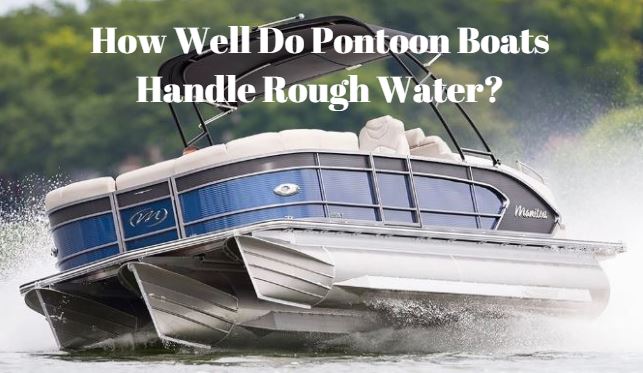
Generally speaking, pontoons can handle much better in choppy water than other recreational boats since they have at least two hulls, providing more stability to the boat than one hull could. If a pontoon (with two ‘toons) is more stable than a monohull, imagine how much better a tritoon’s third tube can make it! Posted by Manitou Pontoon Boats.
Of course, while a pontoon boat itself is generally safe, a little common sense goes a long way on the water at your lake home. Besides ignoring common sense, what can get you in trouble on a pontoon is not knowing how to handle the boat when the water gets rough.

CAN A PONTOON FLIP OVER?
Sure, it’s possible to flip your pontoon. It certainly has happened. But it’s highly unlikely if you’re being responsible. While forces of nature cannot be controlled, there are steps you can take as a boat owner and captain to make sure you reduce the chance of these types of accidents on the water.
Here are a couple factors to keep in mind:
Keep an even load on board. This applies to cargo loads, as well as loads of passengers. Consider how weight distribution can contribute to safety on choppy waters. Make sure your passengers know the importance of maintaining balance on board, especially in rough conditions. Keep in mind that any modifications you make to the boat can also affect its balance or center of gravity. For this reason, “Double decker” pontoon boats with a second level, while they offer additional options for fun on the water, are much more prone to tipping.
The bigger the boat, the more weight the elements have to contend with, and the larger the pontoons, the greater the boat’s stability. If your pontoon is on the smaller side, you’ll want to make sure conditions are safe before going out on the water.
KEEPING YOUR PONTOON STABLE IN ROUGH WATERS
To keep your pontoon safe in rough waters, the key of course is to keep the pontoons above the water and avoid the risk of burying the nosecones. If you’re cruising straight into big waves, and you slow down before hitting a trough, chances are you’re going to dip the pontoon’s nose below water and will take some of that water on board when it crashes over the bow. Depending on the force of the waves, this can cause damage to the pontoon’s playpen, which can cost a considerable amount to fix. Rather than slowing down when riding into the waves, trim up just before hitting the wave. This will help lift the boat’s bow more.
Adjust your course so you’re riding properly into the waves. When possible, rather than riding head-on into the waves, cruise so the waves are at a 30 to 45 degree angle from the center of the boat. Taking the waves at an angle will allow you to keep your bow high more consistently. At this angle, one of the tubes will also ride high, allowing the boat to glide into and out of the waves’ crests and troughs more smoothly. There is still potential to dip the corner of the boat, however.
It is possible to get a special handling package on your boat to handle the elements better. For instance, our Sports Handling Package (SHP) allows higher horsepower and includes power assisted steering, positive angle lifting strakes, and barracuda nosecones, all of which are better for handling rough waters. Underskinning can also help reduce drag from water splashing up beneath the boat.
WATCH THE WEATHER AND THE WATER
This is obvious, but you should always check weather and marine forecasts before going out on the boat. When you are on the water, keep an eye on the skies and look for any changes in the water. If conditions start to turn, it’s always better to prioritize safety over pushing for a little more time on the lake.
View Original post here. Re-posted by Scott Freerksen “The Lake Guy”
